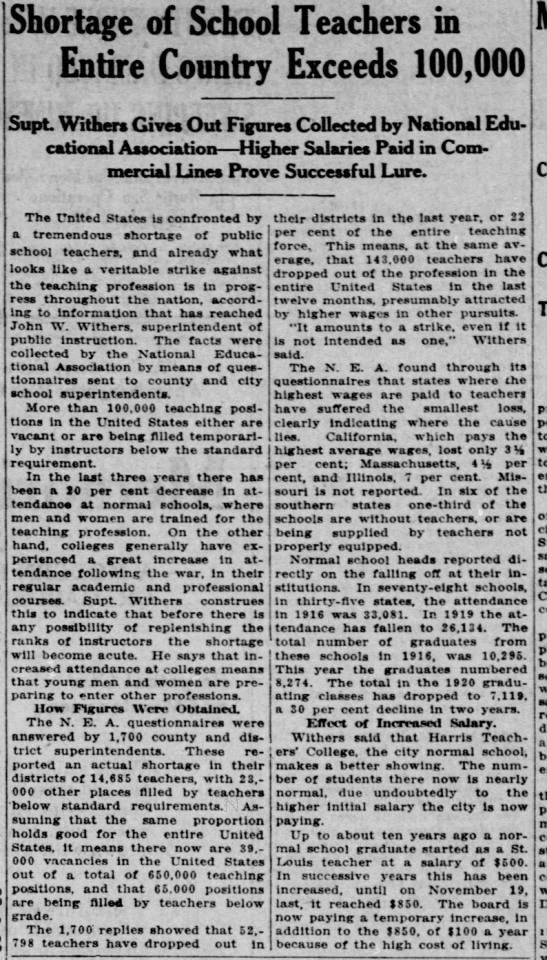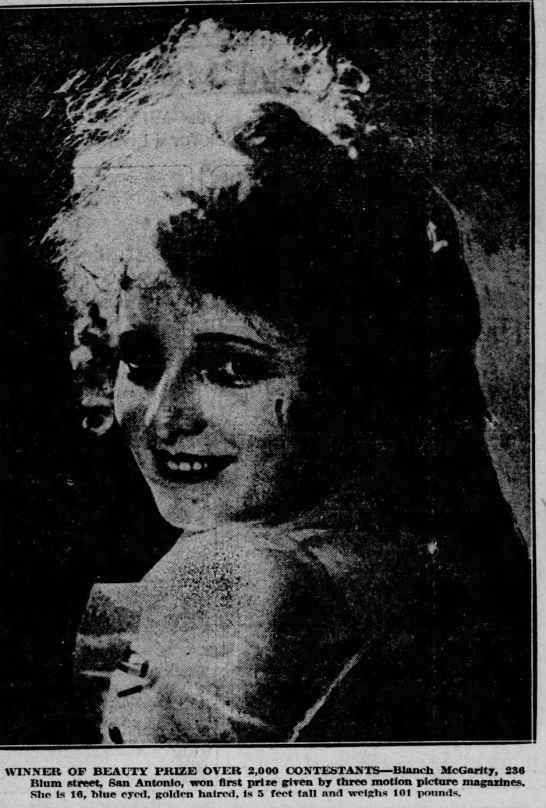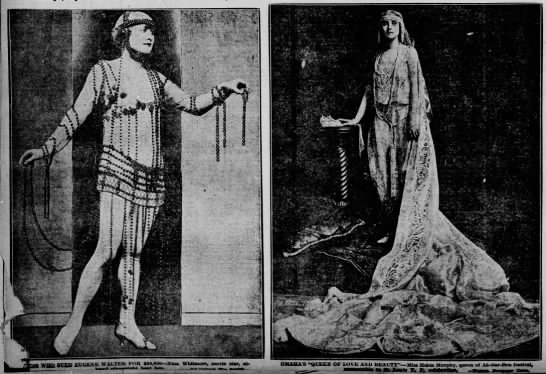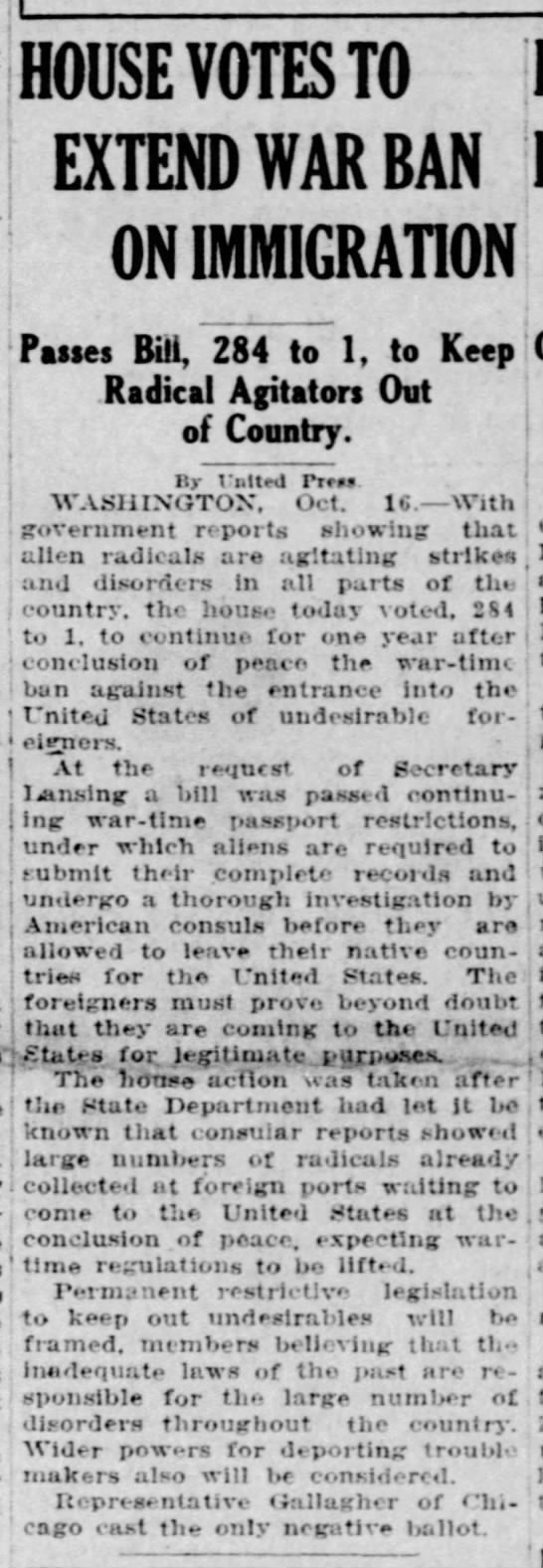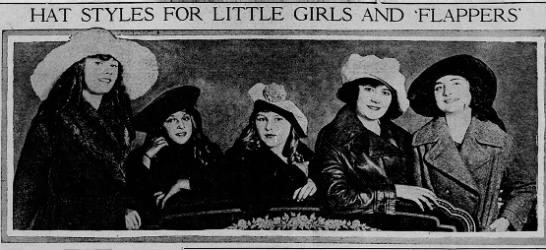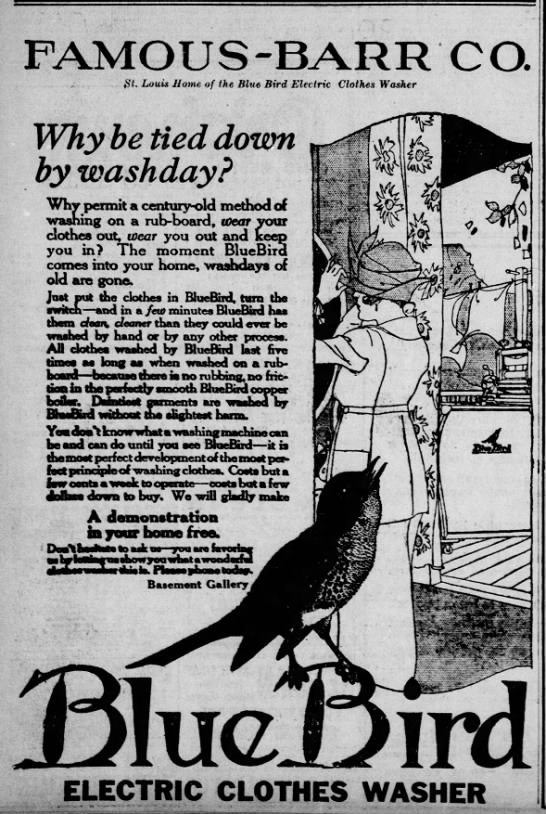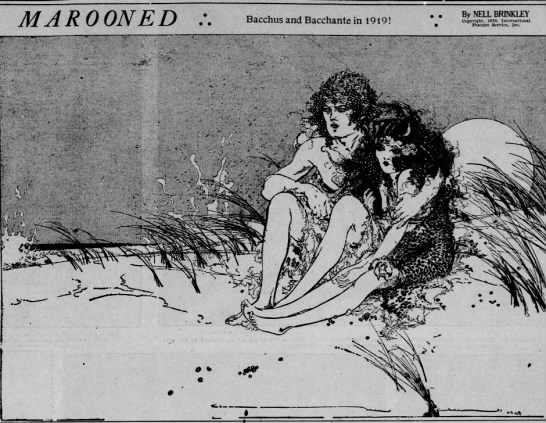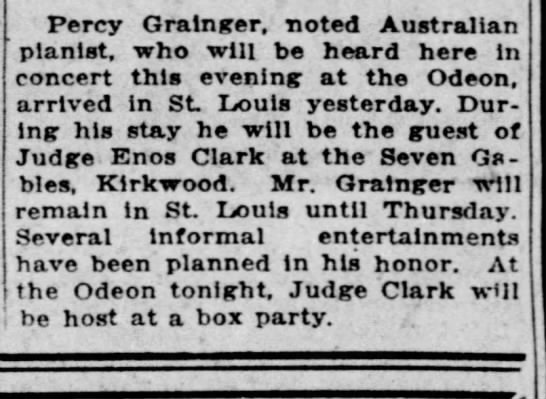 |
| Helen Korngold, Dec. 1919, New York City |
October
Monday 20
A trifle better
Tuesday 21
Still in bed, but he is very sick yet.
Wednesday 22
Improved.
Thursday 23
Lots of guests – Mr. Sigler, Lipshitz, Russack, Steiner, Thurmond. Grandma – Mrs. Levy
Friday 24
Pops still in bed.
Saturday 25
Guess he can’t get out so soon.
Sunday 26
He is much better. Mrs. Waldman & Aunt Jennie came
Notes:
Oct 26
Aunt Jennie Frey Rosenblum (1873-1953) was Helen's maternal aunt.
Jennie married Jonas Rosenblum. Jonas and Jennie were granted a divorce on November 29, 1898. Jonas remarried in 1904.
Like her sister Beryl, Jennie was a music teacher. The 1910 US Census for St. Louis shows Jennie and her son Irl living with her parents. Irl became an attorney.
Feb. 22, 1911, from St. Louis Post-Dispatch:

July 9, 1953 death notice in St. Louis Globe-Democrat:
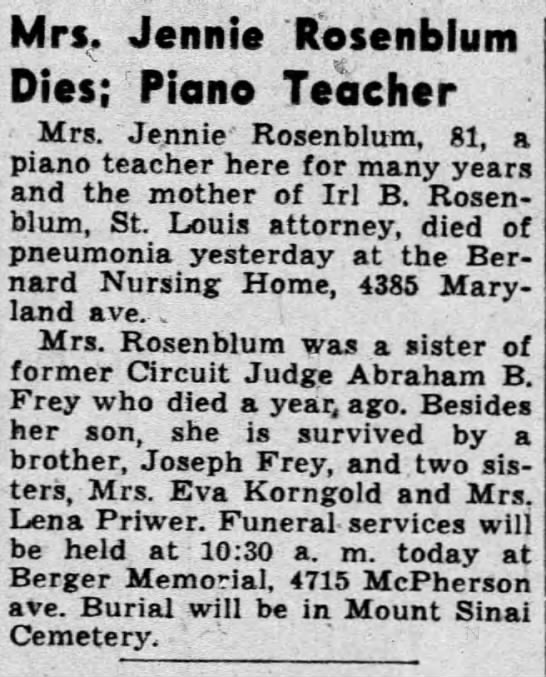
*****
The Frey family history:Benjamin Frey b. 1816 in Rzeszow, Galacia, Austria, immigrated in 1865.
He married Yitel Kressel and they had child David Joshua Frey b. 1840 in Rzeszow.
David married Sophia Hertz (b. 1846 in Germany and d.1929). The 1880 US Census for St. Louis shows he ran a clothing store; in 1900 he was a traveling salesman. David tragically died in December 1901 as this St. Louis Globe-Democrat article reports:
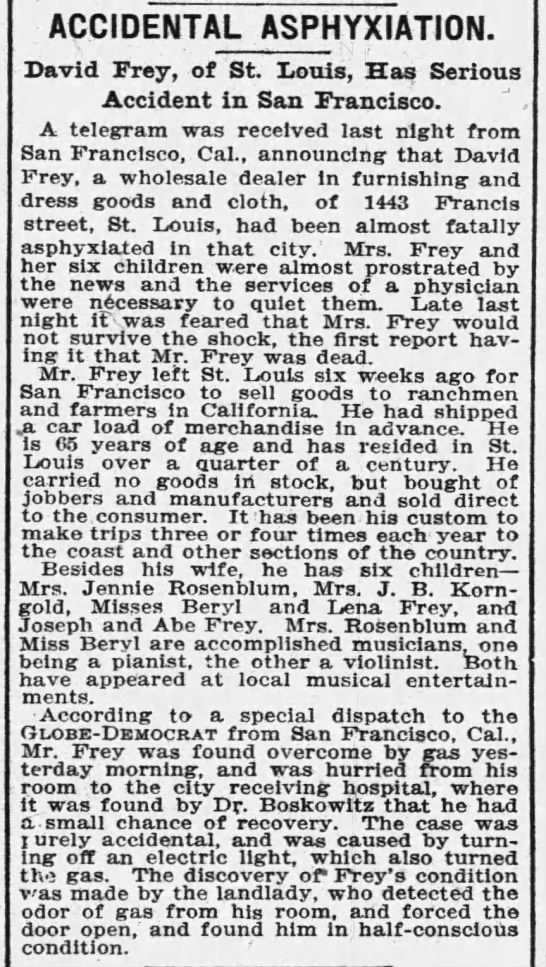
David and Sophia had children Beryl and Jennie, music teachers; Abraham Benjamin, lawyer and judge; Helena; Joseph who was a druggist; and Eva, Helen's mother.
Sophie died in 1929.

December 19, 1928, St. Louis Globe-Democrat newspaper article of Judge Frey's retirement:
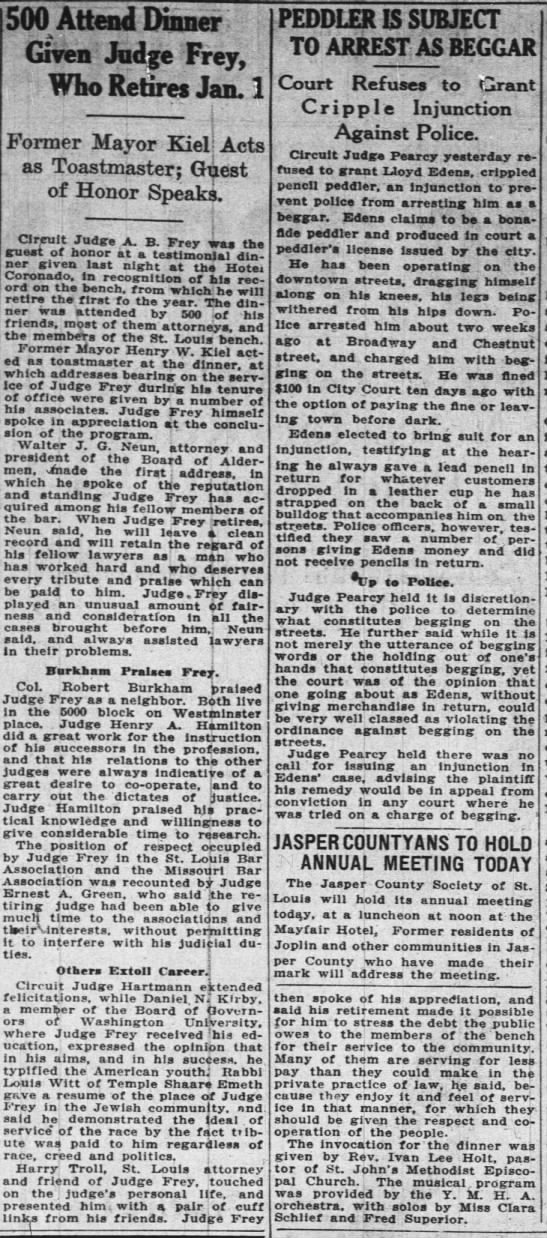
"Judge A. B. Frey was the guest of honor at a testimonial dinner given last night at the Hotel Coronado, in recognition of his record on the bench from which he will retire the first fo the year. The dinner was attended by 500 of his friends. most of them attorneys, and the members of the St. Louis bench. Former Mayor Henry W. Kiel acted as toastmaster at the dinner. at which addresses bearing on the service of Judge Frey during his tenure of office were given by a number of his associates. Judge Frey himself spoke in appreciation at the conclusion of the program. Walter J. G. Neun, attorney and president of the Board of Aldermen made the first address in which he spoke of the reputation and standing Judge Frey has admired among his fellow members of the bar. When Judge Frey retires, Neun said he will leave a clean record and will retain the regard of his fellow lawyers as a man who has worked hard and who deserves every tribute and praise which can be paid to him. Judge Frey displayed an unusual amount of fairness and consideration in all the cases brought before him, Neun said, and always assisted lawyers In their problems. Judge Henry A. Hamilton did great work for the instruction of his successors in the profession. and that his relations to the other judges were always indicative of a great desire to co-operate. and to carry out the dictates of justice. Judge Hamilton praised his practical knowledge and willingness to give considerable time to research."
April 21, 1930 article The St. Louis Star and Times on Joseph Frey assuming editorship of The Modern View newspaper:

Dec. 15, 1931 article in St. Louis Star and Times:
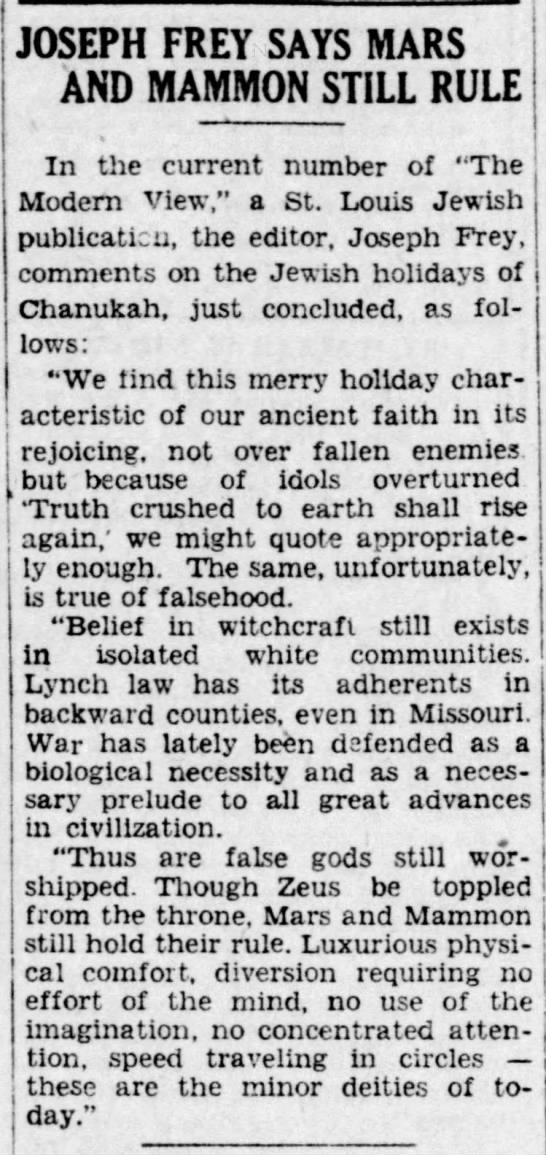
****
In the news this week in 1919:October 20, 1919, article from the St. Louis Star and Times
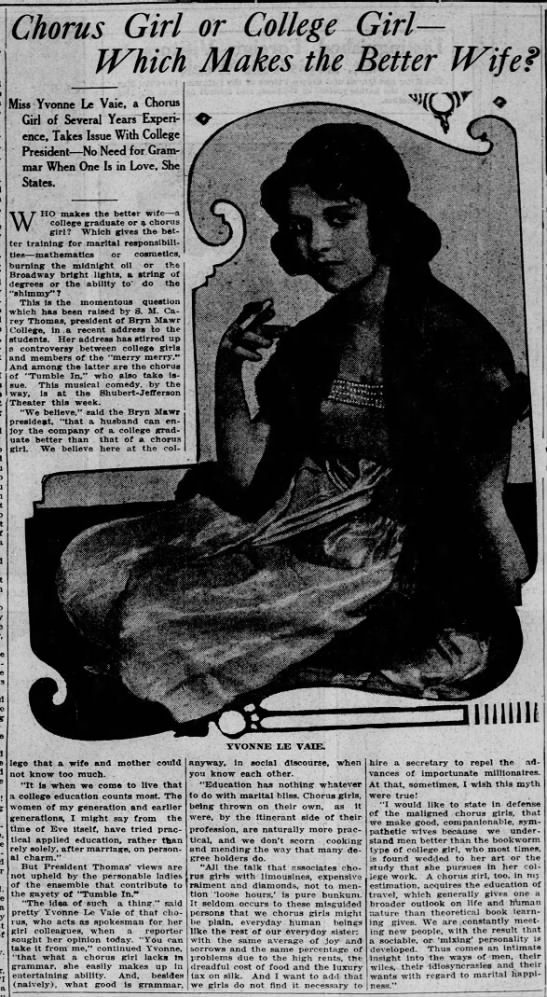
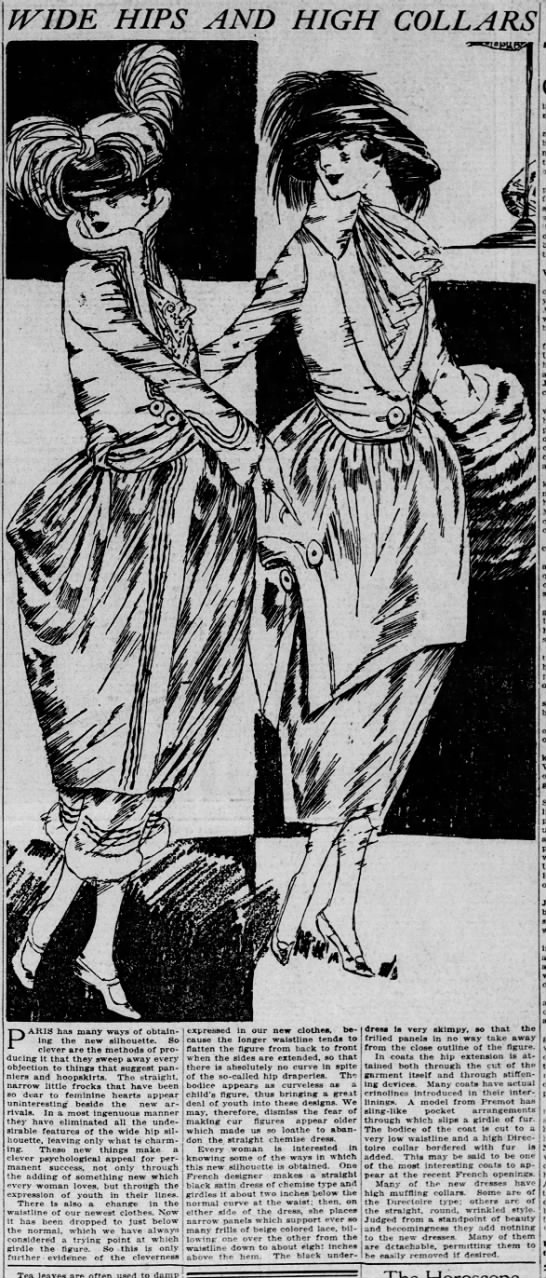
WIDE HIPS AND HIGH COLLARS PARIS has many ways of obtaining the new silhouette. So clever are the methods of producing It that they sweep away every objection to things that suggest panniers and hoopsklrts. The straight, narrow little frocks that have been so dear to feminine hearts appear uninteresting' beside the new arrivals. In a most Ingenuous manner they have eliminated all the undesirable features of the wide hip silhouette, leaving only what is charming. These new things make a clever psychological appeal for permanent success, not only through the adding of something new which every woman loves, but through the expression of youth in their lines. There is also a change in the waistline of our newest clothes. Now it has been dropped to Just below the normal, which we have always considered a trying point at which girdle the figure. So this is only- further evidence of the cleverness j expressed in our new clothes, because the longer waistline tends to flatten the figure from back to front when the sides are extended, so that there is absolutely no curve in spite of the so-called hip draperies. The bodice appears as curveless as a child's figure, thus bringing a great deal of youth into these designs. We may, therefore, dismiss the fear of making cur figures appear older which made us so loathe to abandon the straight chemise dress. Every woman is interested in knowing some of the ways In which this new silhouette is obtained. One French designer makes a straight black satin dress of chemise type and girdles it about two inches below the normal curve at the waist; then, on either side of the dress, she places narrow panels which support ever so many frills of beige colored lace, billowing one over the other from the waistline down to about eight inches above the hem. The black underdress Is very skimpy, so that the frilled panels In no way take away from the close outline of the figure. In coats the hip extension is attained both through the cut of the garment itself and through stiffening devices. Many coats have actual crinolines Introduced in their interlining. A model from Premot has sling-like pocket arrangements through which slips a girdle of fur. The bodice of the coat is cut to a very low waistline and a high Diretcorie collar bordered with fur is added. This may be said to be one of the most interesting coats to appear at the recent French openings. Many of the new dresses have high muffling collars. Some are of the Directoire type; others arc. of the straight, round, wrinkled style. Judged from a standpoint of beauty and becomtngncss they add nothing to the new dresses. Many of them are detachable, permitting them to be easily removed if desired.














